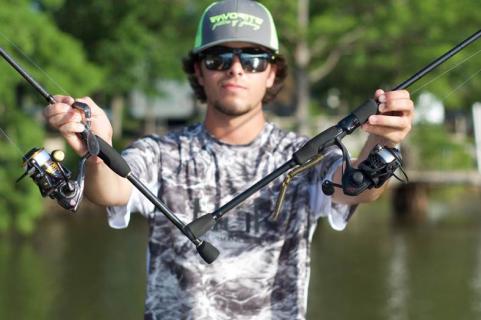Nate Zelinsky

Throughout the year, I host many seminars on big game hunting and scouting. Every one of them talks about the work it takes to be successful hunting big game on public land. The concept generally surrounds the idea that if I can do it, anyone can do it.
For many, the big game season covers a few weeks in the fall. For myself, it is an obsession that lasts all year. After the hunt, I keep watching the animals to see how the season affected them. From there, the animals form winter herds and go into shed season where I can measure the true size of these animals instead of just guessing from afar. Then I research areas, get the draw results, and start scouting for the next season.
I call the program 60/40. If the average hunter plans to put in 60% of their available hunting time into scouting and 40% into actual hunting days in the field their success will go through the roof!
The most common question that I ask hunters across the country is how many times they have spent five or six consecutive days in the field while hunting. Of those people, I ask how many times they have gone home empty-handed after those five or six days. From that, almost every single person that I ask says if they had one more additional day they would almost guarantee they would have their animal that they were chasing.
The concept behind this is the average hunter does not scout. After they finally get consecutive days in the woods, finally learn the animals’ behaviors, habits, and daily routines, they only have one day to be successful. The concept of 60/40 is to make your first day in the woods as successful as the average person’s dream of a couple additional days.
The right amount of scouting always ends at the same position: an extreme knowledge of the land, the animals, and the timing of a daily routine. At this point the hunt strategy becomes obvious and the actual shot almost becomes easy.
To get to that point of knowledge takes time. Generally speaking, May is the month when most of the western states post draw results and hunters will know which tag they have drawn or the hunter can buy an unlimited tag for the coming fall. From here, I break the scouting process down into a few stages.
How to Scout for Elk and Other Big Game
In June, start scouting. For about a month, I put my focus in learning the land. I want to know every road, trail, parking lot, and access point in my area. I also spend as much time as possible hiking to search out the three major players of the daily migration: prime bedding areas, water areas of all kinds, and good food sources. Even if animals do not use these sources at the moment, they will later in the season in a daily pattern. Once I have scouted out all the land and these key features, it’s time to move onto the animals.
Once I am onto the animals, it’s generally approaching July and elk, deer, and pronghorn are about 70% done with antler growth. For the mature animals, it is time to judge age, habits, and other qualities that can lead to knowledge in the coming hunt. I’ll spend all of July looking at as many animals as possible, and more than anything, just trying to understand which valleys or areas are holding the most animals.
August comes around and I narrow the search to a few specific animals. I want to know everything about these beasts. How do they associate with others in the group? When do they drink, when do they bed, what is their general behavior? By the end of the month, with my routines are their routines, I can count on finding, approaching, and stalking them at will.

When your season rolls around in September or October, it is time to take everything you have learned and simply put yourself into the equation. It is literally that simple! Once you have all the knowledge, it’s easy to make good, successful decisions and harvest the animal of your dreams.
If you’re using a guide for your elk hunt, you should consider whether the scouting has already been done of if that is part of the package. Scouting is only one thing to consider when choosing an elk guide.






























